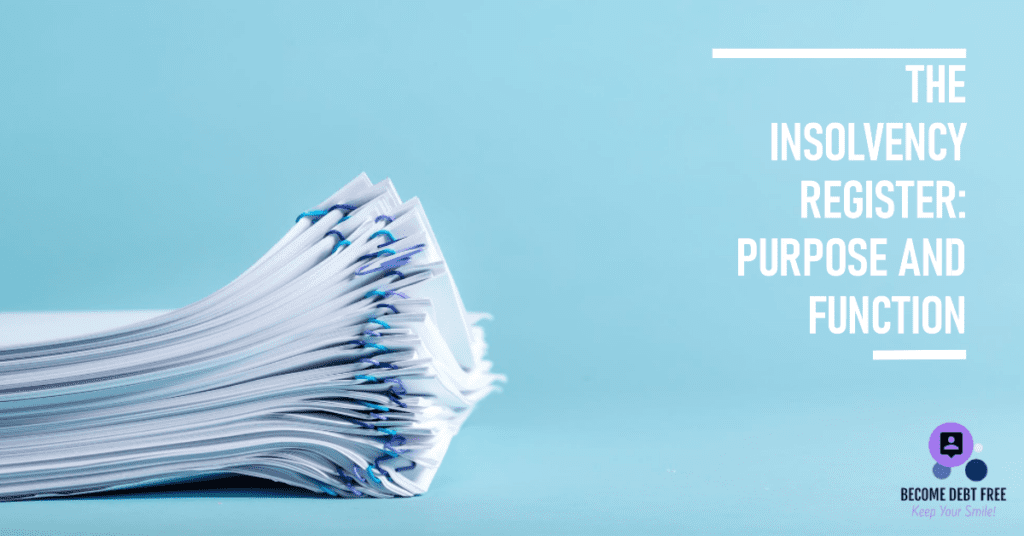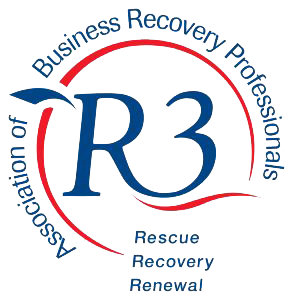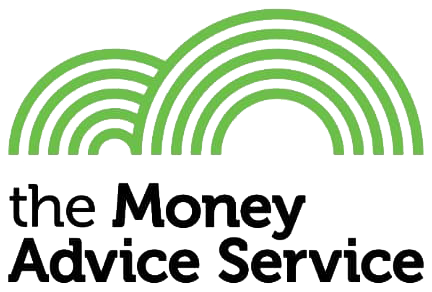There’s a vital tool that plays a crucial role in the insolvency landscape, known as The Register of Insolvencies. It is a public register is a comprehensive repository of information about individuals and companies who have entered into insolvency proceedings. Its role is twofold: not only does it serve as a transparent record for creditors, lenders and those considering financial transactions, but it also helps protect individuals and companies from further financial harm by providing important details about insolvencies.
Understanding the purpose, function, and how to use the Register of Insolvencies can be empowering, whether you’re a financial professional, a creditor, a potential business partner, or an individual trying to navigate the landscape of insolvency. The forthcoming sections will unravel the intricacies of this important register, guiding you through the process of searching and accessing it, interpreting the data, and answering frequently asked questions about it.
Quick Links
- The Purpose and Function of the Register of Insolvencies
- How to Search and Access the Bankruptcy and Insolvency Register
- Understanding the Data in the Register
- How the Register is Used
- Frequently Asked Questions
- What is the difference between the Register of Insolvencies and the Individual Insolvency Register (IIR)?
- How long do records stay on the Register of Insolvencies?
- Can the information on the register impact my credit rating?
- Can I get my details removed from the Register of Insolvencies?
- Can I search the Register of Insolvencies anonymously?
- Seeking Professional Help
- References
The Purpose and Function of the Register of Insolvencies
The Register of Insolvencies, often referred to as the Insolvency Register, is a public record maintained and administered by the Accountant in Bankruptcy (AIB) in Scotland, the Insolvency Service in England and Wales, and the Department for the Economy in Northern Ireland. It serves as a centralised database of all individual and company insolvencies, including bankruptcies, debt relief orders, and insolvency solutions such as Individual Voluntary Arrangements (IVAs).
The Role of the Register
The primary function of the Register of Insolvencies is to provide transparency and access to information about insolvency cases. It’s a go-to resource for anyone seeking details about the insolvency status of a company or an individual. This may include creditors checking the status of their debtors, potential business partners conducting due diligence, or even individuals keeping tabs on their own records. The register is publicly accessible and can be searched online at any time, free of charge.
Additionally, the register serves as a tool for enforcement and compliance. The data contained in the register is used by the AIB, insolvency practitioners, and other legal bodies to monitor the conduct of insolvent individuals and companies, to ensure they are abiding by the terms and restrictions of their insolvency.
Insolvency Practitioners and the Register
Insolvency practitioners play a vital role in the process of insolvency. They are licensed professionals who are tasked with handling insolvency cases, and their duties may range from acting as advisors to serving as administrators in bankruptcies or liquidations.
These practitioners use the register as a source of vital information. By searching the register, they can gain insight into an individual’s or a company’s insolvency history, which can influence their decisions on the suitable insolvency solutions to recommend or enforce. It’s also a vital tool in their duties, helping to identify any inconsistencies or irregularities in insolvency cases that may require further investigation.
The Importance of the Register to the Public
For the public, the Register of Insolvencies serves several important purposes. It’s a source of information about the insolvency status of individuals or companies, and this can help in making informed decisions in financial or business dealings. Additionally, the information in the register can affect an individual’s credit report, with data from the register often used by credit reference agencies when compiling credit scores.
Moreover, it’s important for individuals who have been declared insolvent to keep track of their own records. The register provides an official source of information about their insolvency, including the date it was registered, the type of insolvency, and the period of the insolvency. This can help in planning for future financial decisions and in making the journey towards financial recovery.
In the next section, we will delve into how to search and access the bankruptcy and insolvency register.
How to Search and Access the Bankruptcy and Insolvency Register
Finding information on the Bankruptcy and Insolvency Register is a straightforward process, accessible to anyone with an internet connection. This process is essentially the same, regardless of whether you’re in England, Wales, Scotland, or Northern Ireland, as they all use similar online platforms for their registers.
Steps to Search the Register
Visit the relevant website
For England and Wales, this would be the Insolvency Service’s website, while in Scotland, it’s the Accountant in Bankruptcy’s site. For Northern Ireland, you’d use the Department for the Economy’s website. The register is available 24/7 for you to access and search at your convenience.
Navigate to the insolvency register search page
This is often found in a section related to insolvencies, bankruptcies, or public records. Look for links or options for searching the register.
Input the search details
This usually involves entering the name of the individual or the company that you’re searching for. More advanced searches may allow you to input additional information such as a trading name, address, or the insolvency practitioner’s name to narrow down the results.
Conduct the search
Once you’ve entered the search details, click on the ‘Search’ or ‘Submit’ button to initiate the search.
Review the results
The search will return a list of matches based on the details you provided. Click on the relevant entry to access more detailed information about the insolvency case.
Information Available on the Register
The Insolvency Register provides a wide range of information about insolvency cases. The exact details may vary slightly between different regions, but generally, the information available includes:
- The individual or company’s name and address
- The type of insolvency (e.g., bankruptcy, IVA, debt relief order)
- The date the insolvency was registered
- The insolvency practitioner involved in the case
- Any restrictions in place as part of the insolvency
- The expected end date of the insolvency
Accessing Personal Information and Other Details
All information available on the Insolvency Register is considered public information. That said, access to personal information such as addresses is typically limited to protect privacy. For example, while the register may list an individual’s town or city, it won’t usually provide a full home address.
Types of Searches
The register is primarily searched using the individual’s or company’s name, but different types of searches can be performed depending on the data available or needed. For example, you can search using a trading name, the name of the insolvency practitioner, or even by the date or period of the insolvency. This flexibility helps ensure that you can find the information you need, regardless of the specifics of your case.
Understanding the Data in the Register
The Register provides a wealth of info about each insolvency case. While the specifics can vary slightly, here are the key details you’ll typically find in the register:
Insolvency Type
The type of insolvency is a fundamental piece of data in the register. This could be a bankruptcy, an Individual Voluntary Arrangement (IVA), or a Debt Relief Order (DRO).
- Bankruptcy is a form of insolvency where an individual cannot repay their debts, and their assets are used to pay off creditors.
- An IVA is an agreement between an individual and their creditors to repay a portion of their debts over a specific period.
- A DRO is a form of insolvency designed for individuals with low income, few assets, and debts under a certain threshold. It effectively freezes their debts for a set period, after which the debts are written off if their circumstances have not improved.
Date
The register includes the date the insolvency was registered. This is important as it’s the start date for the insolvency, which in turn influences when the insolvency will end.
Personal Details and Trading Name
The register lists the individual’s or company’s name and often includes their trading name if applicable. However, it doesn’t usually provide full addresses to respect privacy.
Bankruptcy Order Details
For bankruptcies, the register includes additional details like the bankruptcy order’s date and any restrictions in place due to the bankruptcy.
Debt Relief Orders and Bankruptcy Restrictions
A Debt Relief Order (DRO) is a form of insolvency where the individual’s debts are essentially put on hold for a set period (usually 12 months). If their financial situation hasn’t improved by the end of this period, the debts included in the DRO will be written off. A Bankruptcy Restriction Order (BRO) or Undertaking (BRU) is a restriction placed on a bankrupt individual, extending the period of certain bankruptcy restrictions when the bankruptcy has demonstrated dishonest or blameworthy conduct.
Maintenance and Update Time of the Register
The register is continually updated, with new cases added shortly after the insolvency is registered. The exact timing can vary, but typically updates occur within a few working days.
Credit Reports and Their Link to the Register
Insolvencies are a matter of public record and, as such, are reported to credit reference agencies. This means that any insolvencies will appear on the individual’s or company’s credit report. They usually remain there for a set period, often six years, which can affect the individual’s or company’s ability to get credit during that time.
How the Register is Used
The Register of Insolvencies serves as a vital tool for various entities and individuals, offering significant advantages in diverse circumstances. Here, we explore the key use cases of the register and its broader implications.
Credit Reference Agencies and Lenders
One of the primary users of the Register of Insolvencies is credit reference agencies. These entities use the register to maintain up-to-date credit files for individuals and businesses across the UK. This information is vital for lenders to make informed decisions about creditworthiness and potential risk.
When you apply for credit, lenders consult these agencies to review your credit report. If you’re recorded as insolvent on the register, it may affect your ability to obtain credit or impact the terms of any credit you are offered.
Companies House
Another significant user of the register is Companies House. When a company becomes insolvent, the details are added to the register, allowing Companies House to update its own records accurately. This information is critical to maintain transparency about the financial status of companies operating in the UK, thereby informing potential investors, stakeholders, and the general public.
Individuals Dealing with Debts
The Register of Insolvencies is also valuable for individuals dealing with debts. By consulting the register, you can confirm if a debtor is already insolvent, which can influence the course of action you take to recover your money.
Moreover, if you’re considering entering an insolvency procedure yourself, the register can provide insight into how these processes are recorded and the potential implications for your financial future.
In the next section, we’ll delve into some frequently asked questions about the register. This will help shed more light on any uncertainties and provide a comprehensive understanding of this crucial public resource.
Frequently Asked Questions
Navigating the world of insolvency can be daunting. Below, we answer some frequently asked questions about the Register of Insolvencies to help you better understand its function and purpose.
What is the difference between the Register of Insolvencies and the Individual Insolvency Register (IIR)?
The Register of Insolvencies encompasses all forms of insolvency in England and Wales, including corporate insolvency. The IIR, on the other hand, specifically lists individuals who have been declared insolvent. It includes details of bankruptcies, Debt Relief Orders, and Individual Voluntary Arrangements.
How long do records stay on the Register of Insolvencies?
The length of time a record remains on the register depends on the type of insolvency. Generally, bankruptcies, Debt Relief Orders (DROs), and Individual Voluntary Arrangements (IVAs) are removed three months after they’ve been discharged or completed.
Can the information on the register impact my credit rating?
Yes, the information on the Register of Insolvencies is used by credit reference agencies to update your credit file. If you’re listed as insolvent on the register, this can negatively impact your credit rating.
Can I get my details removed from the Register of Insolvencies?
In normal circumstances, your details cannot be removed from the register until the insolvency order is discharged or completed. If you believe there are errors in your record, it is advisable to contact the relevant insolvency practitioner or official receiver handling your case.
Can I search the Register of Insolvencies anonymously?
Yes, searches on the Register of Insolvencies are anonymous. Your details are not recorded or revealed to the person or company you’re searching for.
Seeking Professional Help
Dealing with insolvency can be a complex and overwhelming experience. If you find yourself in a situation where you’re struggling to manage your debts or facing insolvency, it’s essential to seek professional help. Insolvency practitioners are licensed experts who can provide guidance, advice, and tailored solutions to help you navigate through these challenging times.
By consulting an insolvency practitioner, you can gain a better understanding of the options available to you and make informed decisions about the best course of action. They can assess your financial circumstances, explain the implications of different insolvency solutions, and guide you towards the most suitable path for your situation.
Become Debt Free
If you’re facing insolvency or seeking debt relief solutions, we at “Become Debt Free” are here to help. As licensed IPs based in Leeds, we provide advice and solutions for individuals nationwide.
Our experienced team understands the complexities of insolvency and the challenges it presents. We offer comprehensive assistance and support, helping you explore options such as Individual Voluntary Arrangements (IVAs) and providing guidance throughout the process.
To take the first step towards financial recovery, please contact us at 0800 169 1536 or leave an enquiry on our website. Our dedicated professionals are ready to assist you, offering confidential consultations to help you regain control of your financial future.
In conclusion, seeking professional help is crucial when dealing with insolvency. Don’t hesitate to reach out to experienced insolvency practitioners like us at “Become Debt Free” to receive the guidance and support you need.
References
The primary sources for this article are listed below.
The Insolvency Service – GOV.UK (www.gov.uk)
Home | Department for the Economy (economy-ni.gov.uk)
Register of Insolvencies | Accountant in Bankruptcy (aib.gov.uk)
Search the bankruptcy and insolvency register – GOV.UK (www.gov.uk)
Details of our standards for producing accurate, unbiased content can be found in our editorial policy here.









